After 10 years and 80,000 miles on the 2010 Cannondale Supersix, it was time for an upgrade. Enter the Factor 02 and new FLO AS 64 front and AS 77 rear wheel.
Previous Wheels
On the previous bike, I used these bullet-proof, heavy-duty White Industry trainers most days and then a FLO aluminum carbon 60 front and Kysrium Elite back wheel with a disk cover on flatter TT courses.
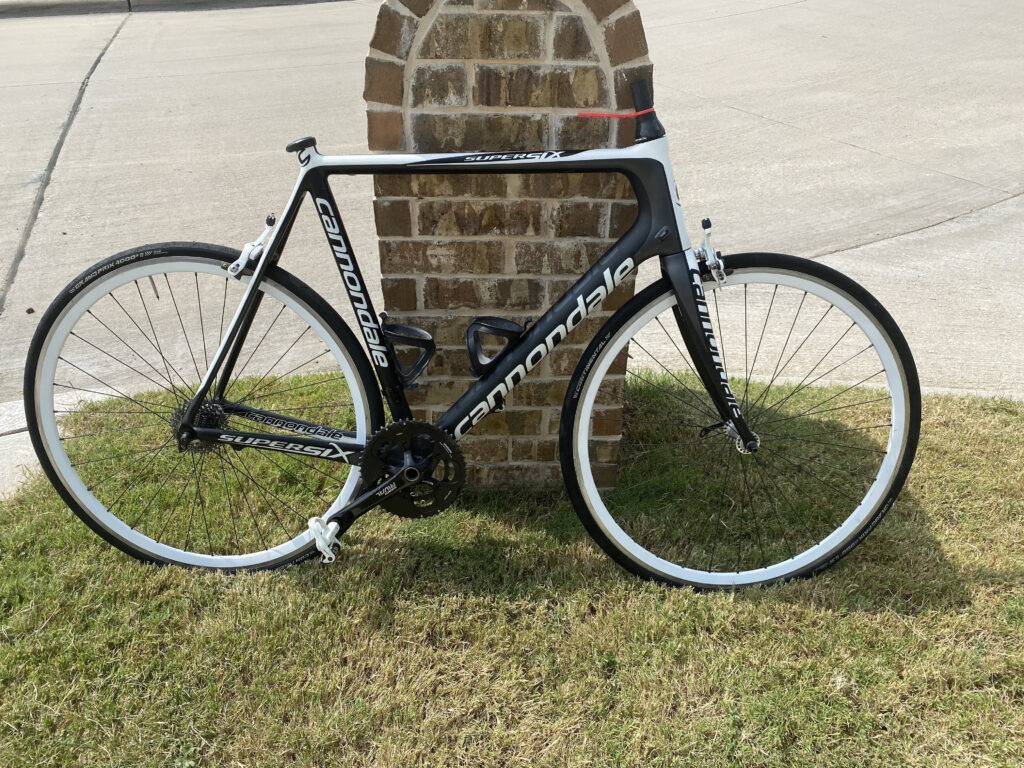
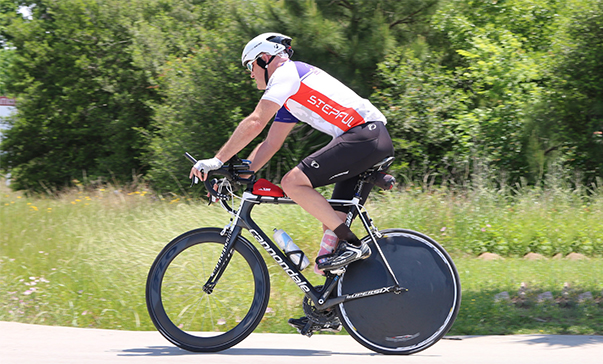
Because the Supersix was a 2010, there were frame limits to tire width. The White Industry trainers would take a 700×25 tire. One the wider rimmed FLO aluminum carbon 60 wheel, while designed to run wider tires, my frame would only allow a 23 without frame rub.
New Wheels: Why FLO?
Enter the new bike, a 2019 Factor 02. One of the reasons for the upgrade was a desired ability to run wider tires. The newer frames allow for wider tires.
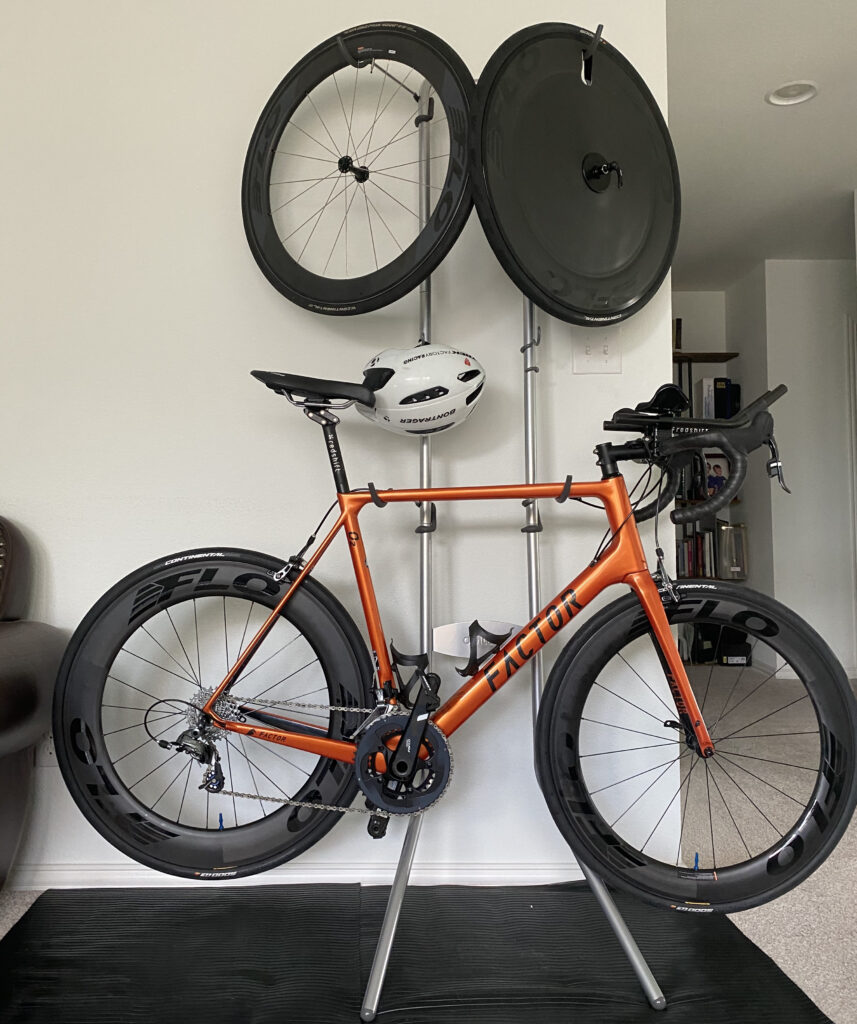
I like the whole ethos of FLO cycling. The direct to consumer model means lower prices, there is a sense of community around the brand, and they are very dedicated to pushing the bounds of wheel engineering. These include strict testing protocol and research in aerodynamic drag, rolling resistance, vibration impedance, and more. Because I dig this approach and the community surrounding it, I applied for the FLO Factory Team and was accepted.
For the new build, I chose the new model of FLO wheels called AS (which stands for All Sport). These carbon clinchers are for roadies and triathletes. I selected for the front wheel a FLO 64 all-carbon rim and a for the rear a FLO AS 77 all-carbon rim. (There are disk brake models, too.) The AS 64 has a rim depth of 64 cm. I could handle a 77/77 setup but sometimes we get pretty wicked crosswinds in Texas, and at the end of an Ultra, I didn’t want to be doing any wrestling. Plus the AS77’s were on backorder as is every other thing bike-related during this COVID season; I had a key race coming up, the Texas Time Trials 212 Mile.
| FLO 64 AS | Front | Rear |
|---|---|---|
| Wheel Weight | 769g* | 907g* |
| Rim Depth | 64.4mm | 64.4mm |
| Internal Rim Width | 21.0mm | 21.0mm |
| Brake Track Width | 28.0mm | 28.0mm |
| Max Rim Width | 28.3mm | 28.3mm |
| Tubeless Compatible | Yes | Yes |
| Carbon Fiber | Matte UD** | Matte UD** |
| Rim Type | 700c Clincher | 700c Clincher |
| Brake Type | Rim | Rim |
| Spokes | Sapim CX-Ray | Sapim CX-Ray |
| Spoke Color | Black | Black |
| Spoke Count | 20 | 24 |
| Spoke Lacing | Radial | 2X – Drive & Non-Drive Side |
| Hub | FLO Vortex 3 | FLO Vortex 3 |
| Bearings | 6900 Japanese EZO | 6902 Japanese EZO |
| Freehub Options | – | Shimano/SRAM 10/11, XDR, Campy |
| Recommended Tire | Continental GP 5000 | Continental GP 5000 |
| Aero Optimized Tire Size | 25mm, 28mm, 32mm | 25mm, 28mm, 32mm |
| Minimum Tire Size | 23mm | 23mm |
| Recommended Tire Pressure | See Tire Pressure Chart | See Tire Pressure Chart |
The FLO AS 77 specs (I have the rear with an 11-28 11-speed cassette).
| FLO 77 AS | Front | Rear |
|---|---|---|
| Wheel Weight | 780g* | 918g* |
| Rim Depth | 76.6mm | 76.6mm |
| Internal Rim Width | 21.0mm | 21.0mm |
| Brake Track Width | 28.0mm | 28.0mm |
| Max Rim Width | 28.4mm | 28.4mm |
| Tubeless Compatible | Yes | Yes |
| Carbon Fiber | Matte UD** | Matte UD** |
| Rim Type | 700c Clincher | 700c Clincher |
| Brake Type | Rim | Rim |
| Spokes | Sapim CX-Ray | Sapim CX-Ray |
| Spoke Color | Black | Black |
| Spoke Count | 20 | 24 |
| Spoke Lacing | Radial | 2X – Drive & Non-Drive Side |
| Hub | FLO Vortex 3 | FLO Vortex 3 |
| Bearings | 6900 Japanese EZO | 6902 Japanese EZO |
| Freehub Options | – | Shimano/SRAM 10/11, XDR, Campy |
| Recommended Tire | Continental GP 5000 | Continental GP 5000 |
| Aero Optimized Tire Size | 25mm, 28mm, 32mm | 25mm, 28mm, 32mm |
| Minimum Tire Size | 23mm | 23mm |
| Recommended Tire Pressure | See Tire Pressure Chart | See Tire Pressure Chart |
One Challenge on Installation: Tight Fit but Fixable
The frame fit with was fine, but I am a rim brake guy (plus the frame available was rim on a deep discount and I have 4 kids in college). FLO has carbon brake pads they recommend and sell which keeps the wheels in warranty. The rims didn’t initially fit in the SRAM Force 22 calipers using the FLO carbon pads without some very slight rubbing on the carbon brake track, not the tire. (I mean very, very slight. But definitely unwanted.)
So I headed out the garage, got my metal file, electric sander with 100 grit, and ran back in and got my wife’s smoothest emory board (shhhhhhhhhhhhh). I filed a bit off the pads, hit them with 100 grit, and then used my wife’s emory board to make sure there were no metal pieces or sand on the pads which would wear down the carbon rims. I wiped each pad down with wet cloth and used a magnifying glass (hello previous science projects) to inspect the smoothness of the pads. They were smooth with no glazing. This only took about 10 minutes total. I took off probably only 1mm-2mm and the wheels now spun with no pad rub.
I did some brake performance tests. Going down a large descent, the stopping power was very close to my aluminum rims. I am a Time Trial rider most of the time, so not much hitting the brakes. If a car pulls out in front of me, there is no way I am getting from the aerobars to the brakes anyway. YOLO.
Of course if you have disk brakes, this is all a moot point. Wheel width and stopping power are much easier to handle.
The Ride Experience
Armed with my new Factor 02 frame and a new fit, I did a 1-hour indoor Zwift ride to acclimate to some pretty significant cleat position changes.
The Scare: Learning Tubeless
These wheels both feature full carbon clincher rims.
After talking with my LBS mechanic, though skeptical, I decided to try tubeless tires. We placed Continental GP5000 TL 700×28 tires with Stan’s Sealant on the FLO rims which are tubeless-ready. FLO Cycling ships tubeless valves and the rim tape to make the implementation simple. My skepticism was from the ability to do a quick fix on a long Ultra race out in the middle of nowhere. Carlos assured me I could carry a tube and just ride that the rest of the race in worst-case scenarios.
The morning after my first indoor ride, I noticed the front tire had lost a ton of pressure. I grabbed the pump and started pumping. When I hit about 80 lbs of pressure on the pump gauge, I heard a loud cracking sound. My first thought was, “Oh no, I’ve cracked the rim.” Upon inspection, I realized what had happened. Because I hadn’t ridden the tires on the road after installation, the front had become unsealed. Airing up the tire caused the bead to reset itself and that was the crack I heard. I just have to get used to exploding the tubeless tire onto the rim. Whew!
IRL Ride #1
The next day was the real-world test–85 miles in August in Texas on a flat 7-mile loop course to test some things in September when it’s still 100ºF.
I ran the pressure on the low side of the pressure chart that FLO has out, just to see what the lower end felt like.
The Factor has slightly more aggressive geometry than my previous Cannondale. I had heard the words “a bit twitchy” used about the frame. But what I got was opposite of that.
On the first loop, I thought, “Oh no, this bike feels slow.”
Note to Self: Feels ≠ data or science.
Here is what was happening. The tires on my Cannondale were run at 115-120psi. Every slight defect in the road…I felt it. This made the old bike feel fast because all of the road vibration (aka chatter) was being transmitted into the frame and then into my body. I was getting sensory information in the form of rattling saying, “You are moving quickly.”
With the FLO’s the wider tires run at lower pressure 80-85 psi, the road chatter was greatly reduced because there wasn’t so much vertical bounce. Instead of my previous tires that wouldn’t give over the micro-surface road inconsistencies, the tire now gave. This doesn’t slow you down, in fact, it speeds you up. You want the bike to go forward not up and down.
If you were riding on a pane of glass, higher pressures would mean lower rolling resistance. But, the moment you add any irregularities, going faster means lowering the tire pressure so the tire compresses so that just a part of it is moving up or down (the area of rubber around where the tire contacts the road). If you keep tires at high pressure over these irregularities, the tire won’t give meaning the the whole bike and rider has to move up and down. This takes much more energy in the form of watts. You are either having to put out the watts to drive the bike forward while a small part of the tire goes up and down OR power your whole weight and the bike’s weight forward and up and down. The rougher the surface, the more this effect becomes visible.
Sidenote: It would be interesting to do testing over a 1,000 miles and somehow track how much further one rides on rough chip seal (up and down distance + forward distance). Granted, other factors weigh into this. Just my curiosity at work.
Also, having wheels that are entirely carbon helped to dampen the road vibration in comparison to the previous aluminum rims with carbon fairing. The FLO 60 Aluminum/Carbon is a solid wheel. The carbons feel a bit better. I don’t have a vibration meter, just going by feel. It could be psychosomatic, but I doubt that. I’ve been riding a looooooong time.
I felt slower but I was actually going faster at the same wattage….more on the data in just a bit.
An Analogy of Bike & Wheel Feel
My wife used to have a Jeep Wrangler. While it looked cool, the road and wind beat you up when driving it. We called the Jeep “The Toaster,” because it was like putting tires on a toaster and going for a drive. It made for a rough ride.
Now don’t laugh, but I drive a Ford Flex. To quote Will Ferrell in Daddy’s Home,

And I love my Ford Flex. It treats me to a smooth ride, and you know what? It didn’t break the bank. Room enough for the whole family. Yes, I love being a dad.
It’s definitely better than a mini-van and the bike fits easily inside, protecting the Meat Motor mantra of:
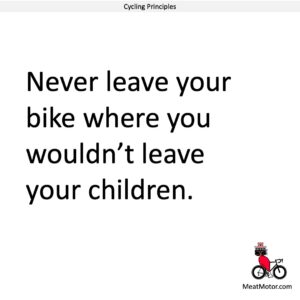
Because the Ford Flex is lower to the ground and has a longer wheelbase, the speed at which you travel is deceptive.

If you go 80+ MPH in the Jeep, you know you are going that fast every second. However, in the Flex, I have looked down and accidentally seen myself going 95mph (okay 100mph once way out in West Texas). It’s easy to do because you don’t “feel” that speed. That’s what the new wheel set-up is like using the FLOs.
Data Comparison: The Wattage and Speed Numbers
When I got home and crunched the numbers on the same loop course with the same wind conditions, I was 1mph faster with the same power output (NP and AP). That’s 13 minutes over 85 miles. Granted that’s not 100% wheels related but a great deal of it is.
In addition to the pure-science improvement in aero and less rolling resistance, the fact that I didn’t feel beat up at the end of the 85 miles helped me have better mental and physical energy.
Once I got the, “Oh this is the Ford Flex vs. Jeep thing” into my head, I was great. No more thinking, this bike is slow for me. I know what is happening now. Subsequent ride data has reinforced this.
Ride #2: Chip Seal Experiment
For the next test ride, I went out and found some semi-nasty chip seal (and, boy, do we have stretches of this in Texas) at sweet spot pace. This surface was something I tried to avoid at all costs on the old wheels at 115-120psi. I called those rides the “Shake Shacks” or the “Texas Cobbles.” On the new AS 64/77 combo, things were vastly improved. Much less vibration transmission. Yes, I’d still rather ride on glass-smooth pavement, but now I won’t abhor chip seal quite so much.
The wattage numbers at various speeds showed a marked improvement again like ride #1.
There is a straight descent on this course which has you hitting 48 mph on chip seal. The first time around the loop I rode it in the drops with fingers on the brakes as I learned to trust this new bike frame and wheels. I never actually had to hit the brakes.
The second time down, I stayed confidently in the aerobars as the FLOs handled this descent beautifully the first round. I felt I had complete control over the entire descent.
An Aside: Numbness and Potential E.D.
As an aside, I have friend who does cycling research. They are working on a hypothesis that male numbness and even erectile dysfunction are not caused by the continual saddle pressure on the perineum, but in fact, the trauma of the continual micro-hits the area takes because of road vibrations. Think of every little bump and vibration like a Floyd Mayweather jab from your saddle to your undercarriage.

While the giant potholes are the right hook, the jabs are what wear your perineum down, damaging nerves. The FLO wheels definitely appear to help reduce this micro-trauma.
Ride #3: Hilly TT Course
For my final review ride, I completed a hilly 30-mile TT loop, and again PR’d on that course by over 3 minutes. The improved comfort coaxed me into staying in the aero position much more even on climbs. The Factor 02 frame + FLO wheel combo feels very responsive when you hit the pedals on the climbs. It just goes.
The Free Hub
The free hub on the FLO AS 77 is a solid, loud volume. That’s actually an important function of the free hub making that clicking sound to notify fellow riders. When you coast, other riders will know you are there.
Pricing
These wheels are VERY competitive in price for their quality.
| Model | Front | Rear |
| FLO Cycling AS 64 Rim | $719 USD | $769 USD |
| FLO Cycling AS 64 Disk | $719 USD | $769 USD |
| FLO Cycling AS 77 Rim | $719 USD | $769 USD |
| FLO Cycling AS 77 Rim | $719 USD | $769 USD |
As a point of comparison, a new HED 6/9 wheelset is going to cost ~$1800.
A pair of Zipp 808’s TL will run ~$3,500.
A pair of FLO’s will cost $1,488.
Final Thoughts
I’ll gather more data samples over time to compare speed at power, but I am pretty sure based on the first three rides, the power-needed-to-go-18mp- and-20mph sample data that WK05 spits out will be lower (better) for this new set-up. The FLO wheels are both scientifically faster and more comfortable, meaning the meat motor (my body) can go harder for longer.
My next wheel purchase will be the AS 77 front for going even a bit faster on the right days. I already own a FLO disk. I just need to get 4 kids OUT of college and make sure the 5th is getting a track or academic scholarship, or other funds (aka government cheese as my Father-In-Law calls it).
I highly recommend the FLO AS wheels. Both the AS 64 version and AS 77 version are quite manageable even on the aero bars. I don’t foresee any problem having a AS 77 front in terms of wind.
Learn more about the FLO AS 64 rim brake wheel.
Learn more about the FLO AS 77 rim brake wheel.
Learn more about the FLO AS 64 disk brake wheel.
Learn more about the FLO AS 77 disk brake wheel.
As usual, we received no compensation or kickbacks for our reviews. The products were purchased, not donated or loaned. If you do purchase some, tell the gang at Flo Cycling that the Meat Motor sent you. Now get to riding!

Jordan Fowler has experience as a head swimming coach of the Frisco Swim Team, a TAAF-awarded coach, a track and field distance running consultant for select Texas High School runners, and has competed as a triathlete, road runner, and cyclist. Though he is remarkably slower than he was in his 20s and 30s, he still enjoys endurance sports and sports science studies.
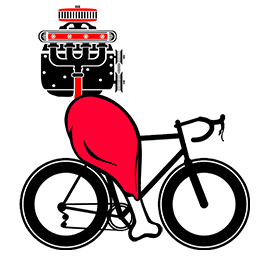

Good write up and helpful, thanks!